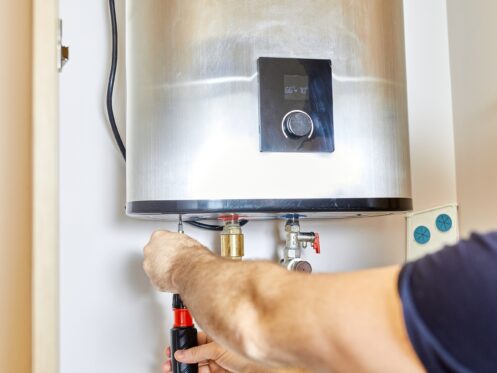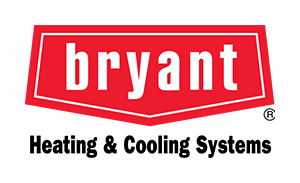The traditional option for providing hot water to homes is installing a tank water heater. Storage water heaters have limitations, including inherent inefficiencies and fixed hot water supplies. That’s why many homeowners are making the switch to a tankless, on-demand water heater. Let’s explore its advantages to see if it’s the right choice for you.
A Virtually Unlimited Hot Water Supply
The average U.S. household has a 40- to 50-gallon tank water heater. If you use it all up, the hot water is gone until the system recovers. That can take an hour or more. A top selling point for on-demand water heaters is that they deliver virtually unlimited hot water. Accurately sizing them for the appropriate gallons per minute is crucial. However, even an undersized unit usually won’t run out. You may experience low water pressure, but the system will still give you hot water. You’ll need to shut off one or more fixtures to restore normal pressure.
Smaller Households’ Carbon Footprint
Tank water heaters are inherently inefficient because they heat and store water in advance, which requires them to consume energy around the clock. Conversely, tankless water heaters use energy only when you request hot water. For the average household, the tankless approach reduces energy usage by 24%-34%. That’s notable when considering that water heaters are second only to HVAC equipment for residential carbon footprint contributions.
Lower Monthly Energy Bill
The lower energy consumption of instantaneous water heaters reduces environmental impact. It affects your wallet as well. The U.S. Department of Energy (DOE) estimates that tankless systems cost from $44 to $108 less to run annually. That may not seem like a lot per month, but it adds up. Even at the low end, you’re looking at more than $650 in savings over 15 years. At the high end, those savings total more than $1,600 over the same period.
Higher Flow Rates
Long hot water delays and the cold-water sandwich effect are common concerns with instant water heaters. Yet, those problems have more to do with sizing and installation than the technology itself. The typical storage water heater has a flow rate of about 3.5 gallons per minute (GPM). Tankless systems generally provide 5–10 GPM. They’re more compatible with low water flow. Tankless systems can also improve water pressure in your home and deliver hot water faster despite the common misconceptions.
The Option to Size Beyond Your Daily Needs
An aspect of going tankless that often doesn’t get enough attention is the option to size up. If you’ve ever hosted family and friends for the holidays, you know the strain it can put on your system. What if you could size your water heater so you never have to deal with excess demand? That isn’t practical with tank-based systems, since having a bigger tank than you need means paying more daily to keep that extra water heated. That isn’t an issue with on-demand systems. You’ll pay more when you use the additional capacity, but you won’t pay any more at other times.
Longer Equipment Lifespan
Another advantage of going tankless is that you won’t have to replace your water heater as often. The average life of a conventional water heater is 10 years, and many units fail within 6–8 years. Even with some luck, you’re looking at 15 years tops. The average lifespan of a tankless water heater is 15–20 years. With routine maintenance, your system can last 25 years or longer.
Electric and Fuel Are Options
Most tankless water heater manufacturers make both electric and fuel-burning versions of their models. Electric water heaters are cheaper to purchase and install. They also provide cleaner and safer operation and are technically more efficient. An electric instant water heater can be the more cost-effective option in certain scenarios. That includes households that use far less than the average of 41 gallons of hot water a day. For most households, a water heater that burns natural gas or liquid propane will be more cost-effective long term. With gas, you also have the option of a high-efficiency model, such as a condensing water heater.
Energy Incentives
The U.S. Environmental Protection Agency (EPA) sets high energy efficiency standards for water heaters and other appliances. They aren’t legal requirements, but the EPA certifies appliances that meet those standards through its ENERGY STAR program. The ENERGY STAR label is the main criterion for many energy incentives. Most fuel-burning tankless waters earn this label. That allows you to offset some or all of your initial costs through tax credits, rebates, and other incentives.
Lower Total Cost of Ownership
Instantaneous water heaters generally cost more to purchase and install than their tanked counterparts. Still, they tend to cost less over the life of the equipment. Lower energy consumption can make up the difference over time. Tankless systems also result in a lower total cost of ownership due to their longer lifespans.
Reduced Space Requirements
Tank water heaters take up a lot of space relative to their tankless counterparts. They’re so big that many homes have a closet dedicated to them. Most on-demand systems take up only a small area on a wall. You can install them out of sight in an attic or basement. You can also install them in a garage without taking up much valuable space. If you currently have a water heater closet, you can repurpose that space for something else.
The Outdoor Installation Option
There’s less worry when installing a tankless water heater in an unconditioned space, such as a garage, basement, or mudroom. In warmer climates, you can even opt for an outdoor installation. This option is particularly notable if you require plumbing system upgrades for a traditional install. An outdoor system can usually connect without those enhancements.
Less Maintenance
On-demand water heaters generally require less maintenance. That’s because they have fewer components, and there’s no anode rod to swap out or tank to flush. Tankless systems do require water and air filter changes, and they also require descaling. If you have soft water, you may need to descale only every 3–5 years. If you have hard water, consider installing an anti-scale device or water softener.
Better Warranty Coverage
Manufacturers expect longer lifespans from their tankless models and reflect this in their standard and extended warranties. A typical water heater warranty is good for six years. Warranties for tankless models often last twice as long or even longer. There are even models on the market with 25-year warranties. Warranties for tankless water heaters tend to be more robust as well. That’s because there’s less that can go wrong with these appliances as long as they’re well-maintained.
Tankless Water Heater Installation
Honest Home Services LLC has locations in Argyle and Flower Mound, TX and provides residential and commercial plumbing services throughout the surrounding areas, including new construction. Our plumbers unclog and repair drains and install and service both tank and tankless water heaters. Our HVAC technicians install, maintain, and repair furnaces, heat pumps, air conditioners, and ductless mini-splits. Our indoor air quality team performs testing and specializes in ventilation systems, humidity control equipment, and air purification technologies.
Call Honest Home Services LLC today, or contact us online to schedule an appointment or get answers to any questions you may have.



